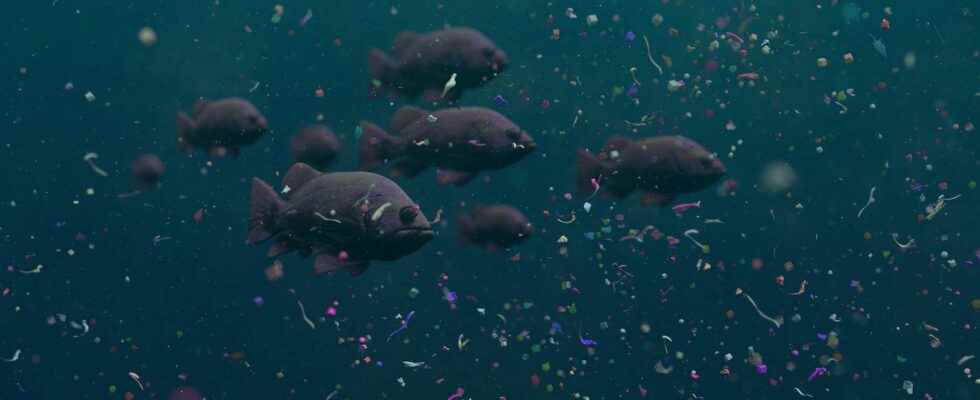Of the microplastics, It’s everywhere. From the summits of the Alps to the ice ofAntarctic passing through the mariana trench. Everywhere. Until in our lungs and in our blood. Tiny bits of plastic. Invisible toeye naked. But which, taken together, would constitute, according to researchers’ estimates, millions of tons of waste. The problem, as you can imagine, is that these microplastics are infinitely difficult to eliminate from the environment.
A challenge that Sichuan University researchers (China) nevertheless noted. They present today a tiny robot – it measures no more than 15 millimeters long – in the shape of a fish whose sole ambition is to ” to swim “ as soon as possible to microplastics lurking in the waters. Pick them up and dispose of them. All driven by flashes of light.
They are not the first to have thought of it, you can imagine. But the idea was not so simple to implement. Because to hope to reach the bottom of the smallest crevasses of our rivers, such robots must imperatively be flexible. Good. Of the soft robots, it exists. They are made ofhydrogels or elastomers. Unfortunately, these materials are easily damaged in contact with water. Bad pick. So far, therefore, attempts have failed in the face of robots that are damaged too quickly.
So, to find inspiration, researchers at Sichuan University turned to nature. Towards this material that some have developed molluscs to protect against attacks: mother-of-pearl. One material at a time solid, durable and flexible. The researchers mainly wanted to copy the layered structure of mother-of-pearl. With, on the one hand, composites based on calcium carbonate (CaCO3) and on the other hand, protein of silk.
Improvements to be made, but promising beginnings
The materials on which the researchers relied are quite different. They first went looking for molecules of β-cyclodextrin (C42H70O35). Molecules that chemists call cage molecules. Because they make it possible to encapsulate other molecules. They are widely used in the food industry and in the pharmaceutical industry. Here, the researchers added a sulfonated derivative of graphene to form composite nanosheets. They put the whole thing in solution and incorporated it into different concentrations of mixtures of latex of polyurethane. Then, thanks to a layer-by-layer assembly method that created a gradient orderly concentration of nanocomposites, they were able to obtain the material from which to form their fish. A material which, moreover, is self-repairing – thanks to hydrogen bonds which can reorganize – and thus ensures a lifetime longer to the miniature robot.
Then only remained ” to give life “ to this little fish, precisely. By sending towards its tail, flashes laser in the near infrared. What to activate the tail in question and put it in movement. To enable it to achieve the same gears that the phytoplankton when moving through the water. Speeds of the order of four centimeters per second. That’s just over 2.5 times the length of its body. A record!
Once launched, the tiny robot sneaks around to pick up microplastics lying around. On the surface, only for the time being. In fact, the waste sticks to ” his skin “. As if by magic ? No way. Magic has nothing to do with it. It is indeed science that is in motion. Here, through chemical interactions that attract microplastics to the robotfish. And it’s still science that will have to work a little more to improve the functionality of this great innovation. Objective: that it can, in the long term, really make its contribution to the fight against plastic pollution. To be continued…
Interested in what you just read?
